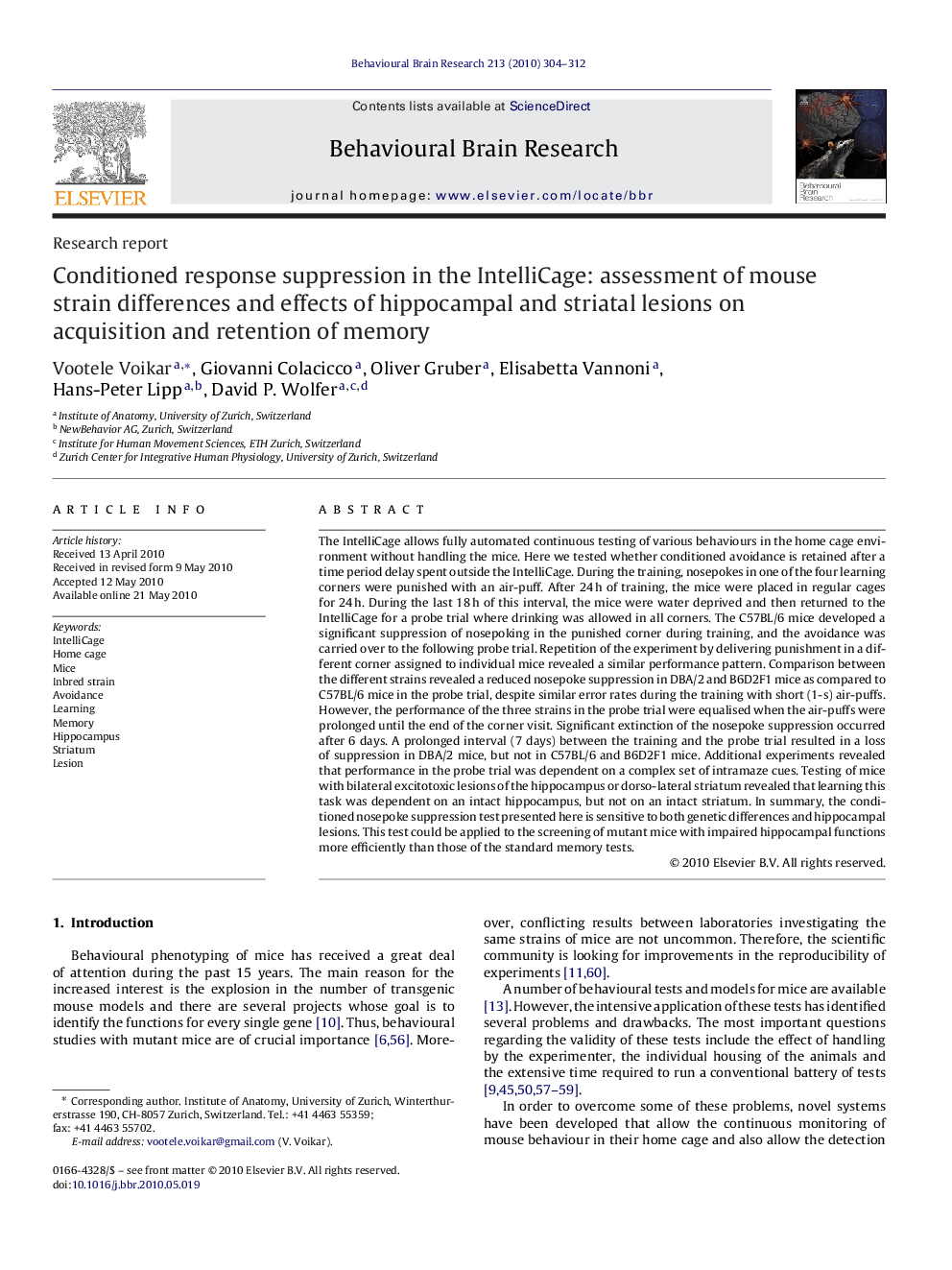| کد مقاله | کد نشریه | سال انتشار | مقاله انگلیسی | نسخه تمام متن |
|---|---|---|---|---|
| 6260096 | 1290026 | 2010 | 9 صفحه PDF | دانلود رایگان |

The IntelliCage allows fully automated continuous testing of various behaviours in the home cage environment without handling the mice. Here we tested whether conditioned avoidance is retained after a time period delay spent outside the IntelliCage. During the training, nosepokes in one of the four learning corners were punished with an air-puff. After 24Â h of training, the mice were placed in regular cages for 24Â h. During the last 18Â h of this interval, the mice were water deprived and then returned to the IntelliCage for a probe trial where drinking was allowed in all corners. The C57BL/6 mice developed a significant suppression of nosepoking in the punished corner during training, and the avoidance was carried over to the following probe trial. Repetition of the experiment by delivering punishment in a different corner assigned to individual mice revealed a similar performance pattern. Comparison between the different strains revealed a reduced nosepoke suppression in DBA/2 and B6D2F1 mice as compared to C57BL/6 mice in the probe trial, despite similar error rates during the training with short (1-s) air-puffs. However, the performance of the three strains in the probe trial were equalised when the air-puffs were prolonged until the end of the corner visit. Significant extinction of the nosepoke suppression occurred after 6 days. A prolonged interval (7 days) between the training and the probe trial resulted in a loss of suppression in DBA/2 mice, but not in C57BL/6 and B6D2F1 mice. Additional experiments revealed that performance in the probe trial was dependent on a complex set of intramaze cues. Testing of mice with bilateral excitotoxic lesions of the hippocampus or dorso-lateral striatum revealed that learning this task was dependent on an intact hippocampus, but not on an intact striatum. In summary, the conditioned nosepoke suppression test presented here is sensitive to both genetic differences and hippocampal lesions. This test could be applied to the screening of mutant mice with impaired hippocampal functions more efficiently than those of the standard memory tests.
Journal: Behavioural Brain Research - Volume 213, Issue 2, 1 December 2010, Pages 304-312